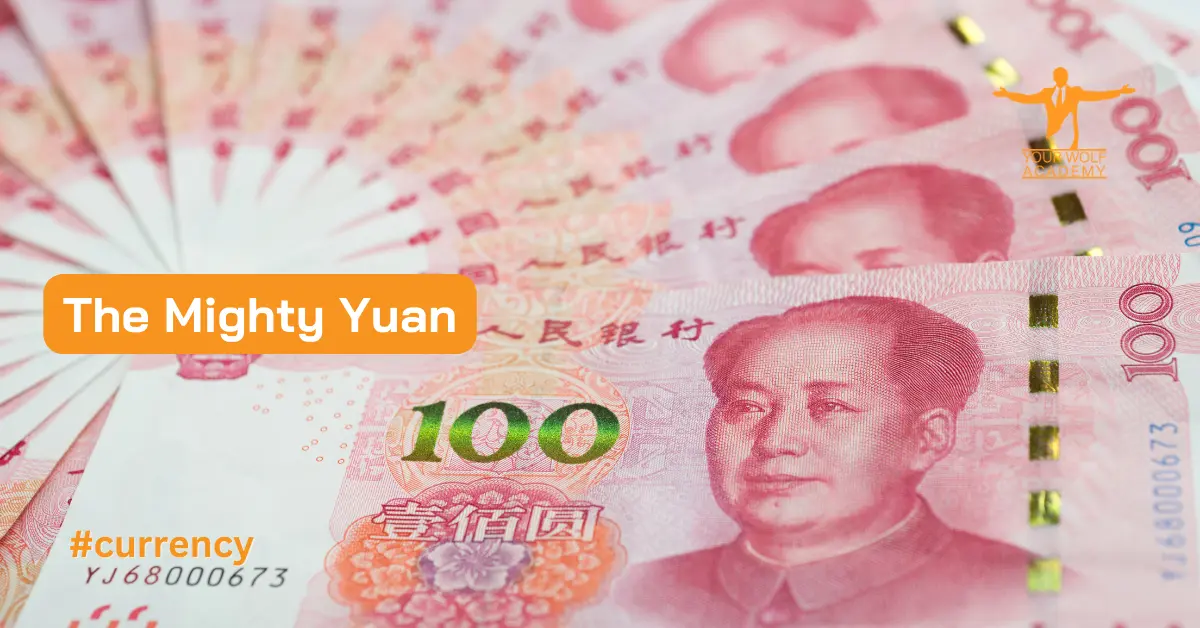The UK 100 index is one of the most widely watched stock market indices in the world. Also known as the FTSE 100, it is a benchmark index that tracks the performance of the largest companies listed on the London Stock Exchange.
In this comprehensive guide, we will delve into the history of the UK 100 index, how it is composed, and how traders and investors use it to make informed decisions.
History of the UK 100 Index
The UK 100 index was launched on January 3, 1984, by the Financial Times Stock Exchange (now known as FTSE Russell). The index was created to provide investors with a snapshot of the performance of the largest companies listed on the London Stock Exchange.
It was designed to be a broad-based index that includes companies from a variety of sectors, such as finance, energy, healthcare, and consumer goods.
Composition of the UK 100 Index
The UK 100 index is composed of the 100 largest companies listed on the London Stock Exchange. These companies are selected based on their market capitalization, which is the total value of their outstanding shares. The companies with the highest market capitalization are given the largest weighting in the index.
The composition of the UK 100 index is reviewed every quarter by the FTSE Russell. Companies that no longer meet the index’s criteria are removed, and new companies are added to the index if they meet the requirements. This means that the composition of the index can change over time.
The UK 100 index is a market capitalization-weighted index, which means that the companies with the largest market capitalization have the most significant influence on the index’s performance. As of April 12, 2023, the top five companies in the UK 100 index by market capitalization are:
- Royal Dutch Shell
- HSBC Holdings
- AstraZeneca
- BP
- Unilever
Here’s a table showing the latest composition of the UK 100 Index:
| Company Name | Ticker Symbol | Sector |
| 3i Group PLC | III.L | Financials |
| Admiral Group PLC | ADM.L | Financials |
| Anglo American PLC | AAL.L | Basic Materials |
| Antofagasta PLC | ANTO.L | Basic Materials |
| Ashtead Group PLC | AHT.L | Industrials |
| Associated British Foods PLC | ABF.L | Consumer Goods |
| AstraZeneca PLC | AZN.L | Health Care |
| Aviva PLC | AV.L | Financials |
| BAE Systems PLC | BA.L | Industrials |
| Barclays PLC | BARC.L | Financials |
| Barratt Developments PLC | BDEV.L | Consumer Cyclical |
| Berkeley Group Holdings PLC | BKG.L | Consumer Cyclical |
| BHP Group PLC | BHP.L | Basic Materials |
| BP PLC | BP.L | Energy |
| British American Tobacco PLC | BATS.L | Consumer Defensive |
| BT Group PLC | BT.A | Communication Services |
| Bunzl PLC | BNZL.L | Industrials |
| Burberry Group PLC | BRBY.L | Consumer Cyclical |
| Carnival PLC | CCL.L | Consumer Cyclical |
| Centrica PLC | CNA.L | Utilities |
| Coca-Cola HBC AG | CCH.L | Consumer Defensive |
| Compass Group PLC | CPG.L | Consumer Cyclical |
| CRH PLC | CRH.L | Basic Materials |
| Croda International PLC | CRDA.L | Basic Materials |
| DCC PLC | DCC.L | Industrials |
| Diageo PLC | DGE.L | Consumer Defensive |
| Direct Line Insurance Group PLC | DLG.L | Financials |
| DS Smith PLC | SMDS.L | Consumer Cyclical |
| easyJet PLC | EZJ.L | Industrials |
| Evraz PLC | EVR.L | Basic Materials |
| Experian PLC | EXPN.L | Industrials |
| Ferguson PLC | FERG.L | Industrials |
| Flutter Entertainment PLC | FLTR.L | Consumer Cyclical |
| Fresnillo PLC | FRES.L | Basic Materials |
| GlaxoSmithKline PLC | GSK.L | Health Care |
| Glencore PLC | GLEN.L | Basic Materials |
| Halma PLC | HLMA.L | Industrials |
| Hargreaves Lansdown PLC | HL.L | Financials |
| HSBC Holdings PLC | HSBA.L | Financials |
| Imperial Brands PLC | IMB.L | Consumer Defensive |
| Informa PLC | INF.L | Communication Services |
| InterContinental Hotels Group PLC | IHG.L | Consumer Cyclical |
| International Consolidated Airlines Group SA | IAG.L | Industrials |
| Intertek Group PLC | ITRK.L | Industrials |
| ITV PLC | ITV.L | Communication Services |
| JD Sports Fashion PLC | JD.L | Consumer Cyclical |
| Johnson Matthey PLC | JMAT.L | Technology |
| Company Name | Ticker Symbol | Sector |
| Kingfisher PLC | KGF.L | Consumer Cyclical |
| Land Securities Group PLC | LAND.L | Real Estate |
| Legal & General Group PLC | LGEN.L | Financials |
| Lloyds Banking Group PLC | LLOY.L | Financials |
| London Stock Exchange Group PLC | LSEG.L | Financials |
| Marks and Spencer Group PLC | MKS.L | Consumer Defensive |
| Melrose Industries PLC | MRO.L | Industrials |
| Mondi PLC | MNDI.L | Basic Materials |
| National Grid PLC | NG.L | Utilities |
| Next PLC | NXT.L | Consumer Cyclical |
| Ocado Group PLC | OCDO.L | Consumer Defensive |
| Paddy Power Betfair PLC | PPB.L | Consumer Cyclical |
| Pearson PLC | PSON.L | Communication Services |
| Pershing Square Holdings Ltd | PSH.L | Financials |
| Phoenix Group Holdings PLC | PHNX.L | Financials |
| Polymetal International PLC | POLY.L | Basic Materials |
| Prudential PLC | PRU.L | Financials |
| Reckitt Benckiser Group PLC | RB.L | Consumer Defensive |
| RELX PLC | REL.L | Communication Services |
| Rentokil Initial PLC | RTO.L | Industrials |
| Rio Tinto PLC | RIO.L | Basic Materials |
| Rolls-Royce Holdings PLC | RR.L | Industrials |
| Royal Dutch Shell PLC | RDSa.L | Energy |
| RSA Insurance Group PLC | RSA.L | Financials |
| Sage Group PLC | SGE.L | Technology |
| Sainsbury (J) PLC | SBRY.L | Consumer Defensive |
| Schroders PLC | SDR.L | Financials |
| Scottish Mortgage Investment Trust PLC | SMT.L | Financials |
| Segro PLC | SGRO.L | Real Estate |
| Severn Trent PLC | SVT.L | Utilities |
| Smith & Nephew PLC | SN.L | Health Care |
| Smiths Group PLC | SMIN.L | Industrials |
| Spirax-Sarco Engineering PLC | SPX.L | Industrials |
| Standard Chartered PLC | STAN.L | Financials |
| Standard Life Aberdeen PLC | SLA.L | Financials |
| Taylor Wimpey PLC | TW.L | Consumer Cyclical |
| Tesco PLC | TSCO.L | Consumer Defensive |
| Unilever PLC | ULVR.L | Consumer Defensive |
| United Utilities Group PLC | UU.L | Utilities |
| Vodafone Group PLC | VOD.L | Communication Services |
| Whitbread PLC | WTB.L | Consumer Cyclical |
| WPP PLC | WPP.L | Communication Services |
How the UK 100 Index is Used
The UK 100 index is used by traders and investors as a benchmark for the performance of the UK stock market. It is also used as a tool for measuring the performance of investment portfolios and as a basis for creating index-linked financial products, such as exchange-traded funds (ETFs).
Traders and investors use the UK 100 index to make informed decisions about buying and selling stocks. If the index is rising, it may be a good time to buy stocks, while a falling index may indicate that it is time to sell.
Additionally, investors may use the UK 100 index to gauge the overall health of the UK economy, as a strong economy generally leads to a rising stock market.

Factors that Influence the UK 100 Index
The performance of the UK 100 index is influenced by a variety of factors, including economic indicators, company earnings reports, and geopolitical events. For example, if the UK economy is growing, the UK 100 index is likely to rise, as investors anticipate increased profits for companies. On the other hand, if a major company in the index reports disappointing earnings, the index may fall.
The UK 100 index is also affected by geopolitical events, such as political instability or trade tensions. These events can create uncertainty in the markets, which can lead to volatility in the UK 100 index.
Risks of Investing in the UK 100 Index
Investing in the UK 100 index comes with certain risks, as with any investment. One of the main risks is market volatility. The UK 100 index can experience significant fluctuations in value over short periods, which can result in losses for investors.
Additionally, investing in the UK 100 index means that you are putting your money into a diversified basket of stocks, which can protect you from the risks of investing in individual companies. However, it also means that you may not be able to benefit from the potential gains of high-performing individual stocks.
Another risk of investing in the UK 100 index is currency risk. The value of the UK 100 index is denominated in British pounds, which means that investors who hold other currencies may be exposed to currency fluctuations. For example, if the value of the pound falls against the investor’s home currency, the value of their investment in the UK 100 index may decrease.
Finally, investors in the UK 100 index should be aware of the impact of fees and expenses. Index-linked financial products, such as ETFs, often come with management fees and other expenses, which can eat into investors’ returns over time.
Conclusion
The UK 100 index is an important benchmark for the performance of the largest companies listed on the London Stock Exchange. As a market capitalization-weighted index, it provides investors with a snapshot of the performance of the UK stock market.
Traders and investors use the UK 100 index to make informed decisions about buying and selling stocks, as well as to measure the performance of their investment portfolios. However, investing in the UK 100 index comes with risks, such as market volatility, currency risk, and fees and expenses. Understanding these risks is essential for investors who are considering investing in the UK 100 index.
Your Wolf Academy offers a range of educational resources to help traders succeed, including free signals, technical analysis, and weekly webinars. Sign up today and get a recommendation for a regulated brokerage company that suits your needs.


